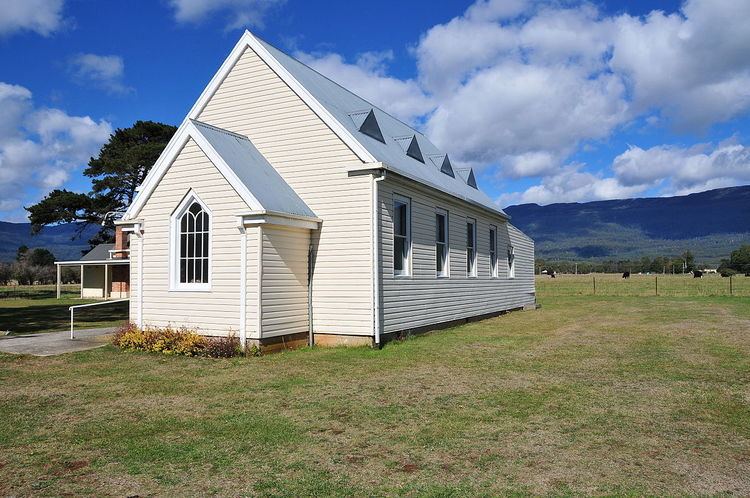Population 318 (2011 census) LGA(s) Meander Valley Council Postal code 7304 | Postcode(s) 7304 Local time Tuesday 1:43 PM | |
 | ||
Location 223 km (139 mi) N of Hobart77 km (48 mi) W of Launceston70 km (43 mi) S of Devonport26 km (16 mi) W of Deloraine8 km (5 mi) S of Mole Creek Weather 17°C, Wind NE at 13 km/h, 61% Humidity | ||
Caveside is a rural locality in Northern Tasmania, lying between the Great Western Tiers to the south and Mole Creek to the north.
Contents
Map of Caveside TAS 7304, Australia
It is a small community within an agricultural area, rather than a town. The town lies in an area of limestone; erosion of this has led to the surrounding land being riddled with caves. To the west are two undeveloped cave complexes, Wet Caves and Honeycomb Caves, which are an attraction to cavers. The ground is pitted with sinkholes, a danger to the cattle that graze the fields. The district is probably named after the caves, though until 1897 it was known as Brookside. Prior to settlement what is now developed agricultural land was dense forest. The timber and dairy industries are prominent parts of Caveside's rural history and it was known in the early 20th century for the quality of its cattle and sheep studs.
History
Henry Reed became a significant figure in the early history of Caveside, after he took up a large land allotment in 1835. Reed conducted some early Wesleyan services in his home on the property known as Wesley Dale. He donated the land for the Wesleyan church with the intention that, when it was built, it was to initially be used as a school. The first official Wesleyan services began c.1875 in a private home that was sited in a paddock, near the bridge over Lobster creek. Caveside Wesleyan church, and an associated cottage, was built and completed in 1876. In 1903 the church became the Caveside Methodist church. It was replaced with a brick church in 1978, that is no longer open or used for church services.
Caveside had a post office from 1887 operating from a private home. It opened on the 1st of November and finally closed in 1980. A private school opened, in the Wesleyan church, in Caveside on 4 June 1877 with 27 students. A single-room school building, and associated teacher's residence, was constructed over 1892–93. The school remained in this building until 1937 when the school was closed. The school building was moved to Mole Creek in 1938 and used for 'domestic arts' at the Mole Creek district area school.
Additional buildings were constructed on the Methodist church's land. These buildings included a cottage and two buildings used as a shop and a post office. The shop and post office buildings were rented out from c.1900 to c.1940. A hall, noted for its fine timber lining, was built in 1921. A public swimming pool, built with local volunteer labour, opened in 1957. It was extended in 1980 with the addition of a tennis court and in 2001 when gas barbeques were added. The pool is a 16-metre (52 ft) outdoor pool and is managed by the Caveside Recreation Committee. The shop has long closed but the Caveside memorial hall remains open and is operated by the Meander Valley Council. The Church of Christ formed an organisation in the area in 1909. Prior to this services had been held in Caveside. They built a hand-split timber church building and opened it in 1911. The original building was moved in 1956 and a replacement built. The building is now known as "The Church in the Paddock".
